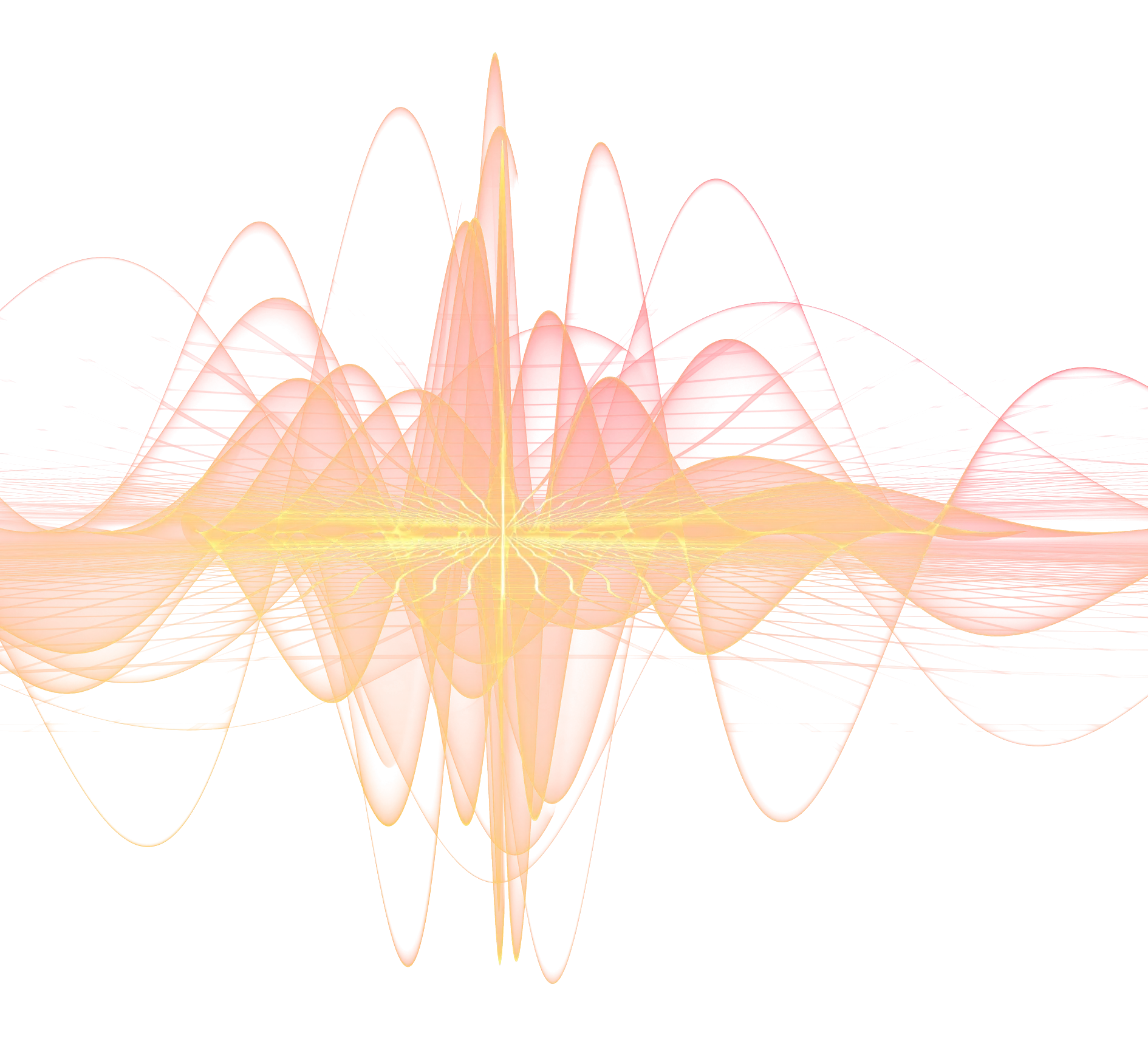
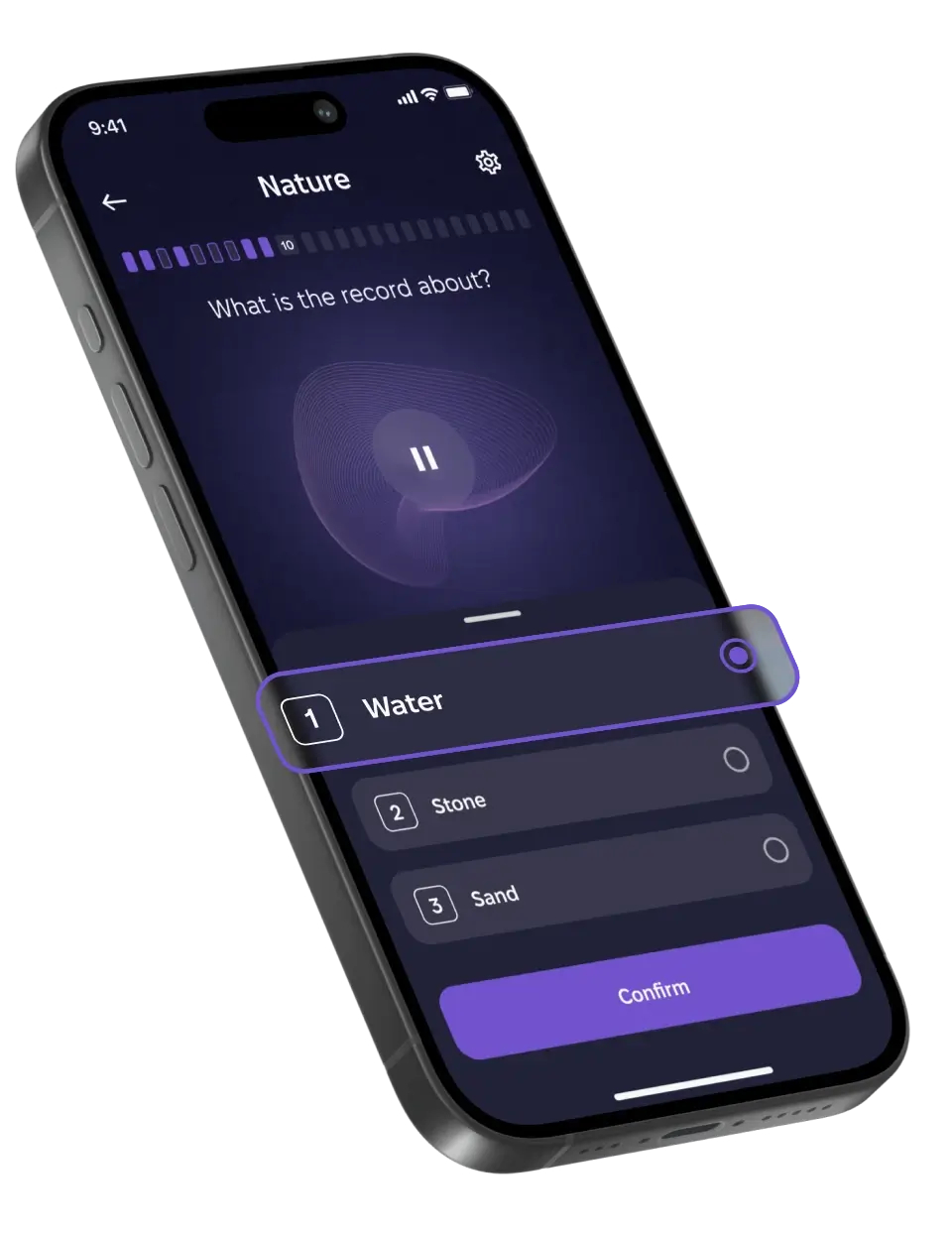






Integrated Recorder.
Start training with your own Thoughts.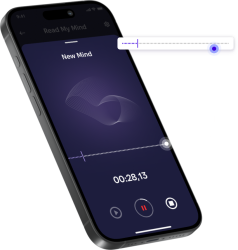
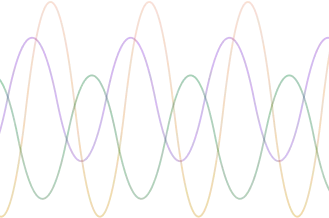


Use built-in Recorder to Capture Your Thoughts
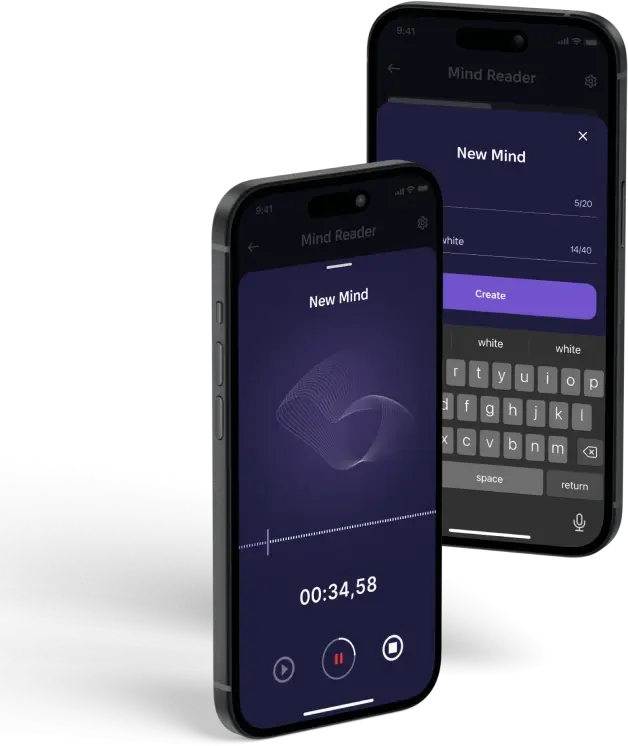
Easily Group Your Thoughts into 'Sets'. Start with basic categories like Family Names, Colors, Weather, and Numbers to enhance your training.
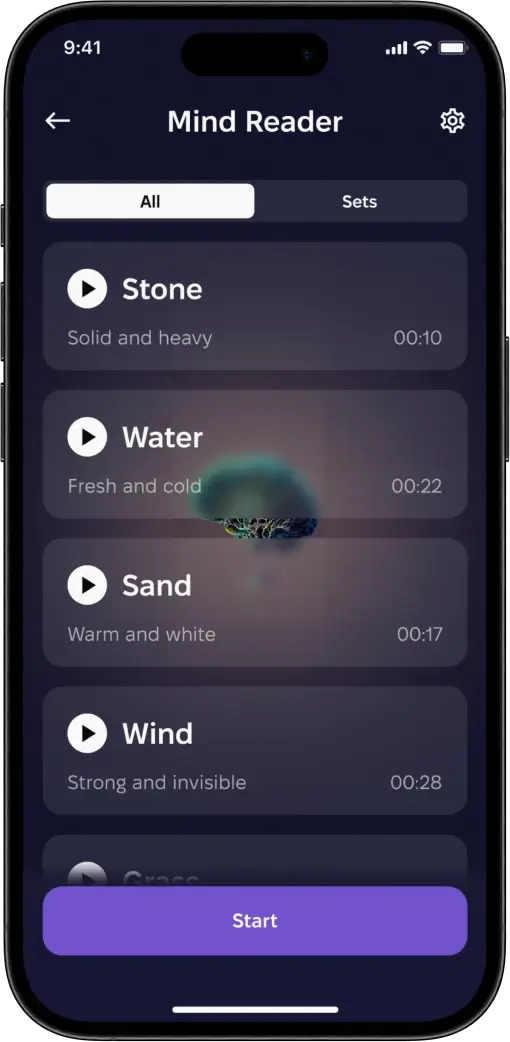
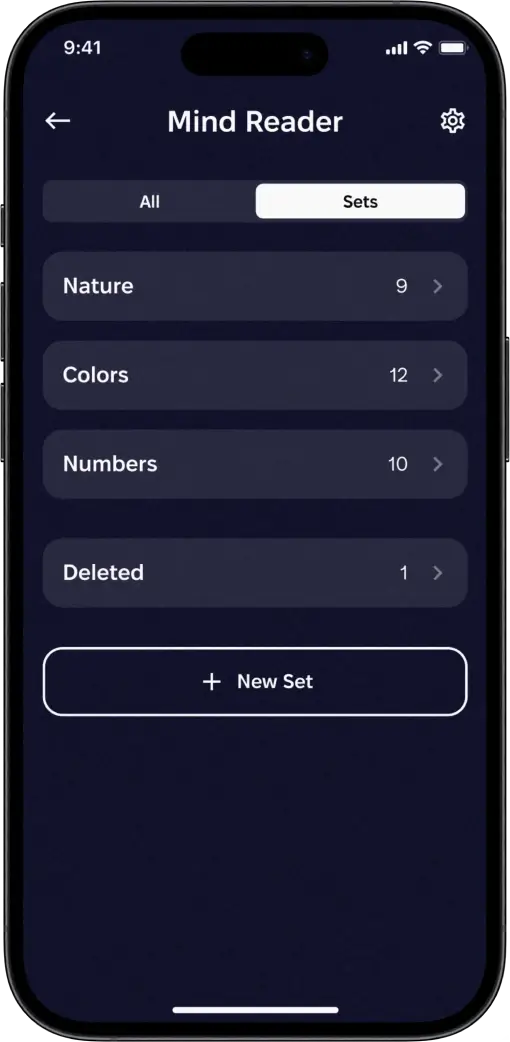
Start a Quiz with any Set of 3 or More Thoughts. Focus and align with the Thought as it plays, then choose a correct name from the selection panel.
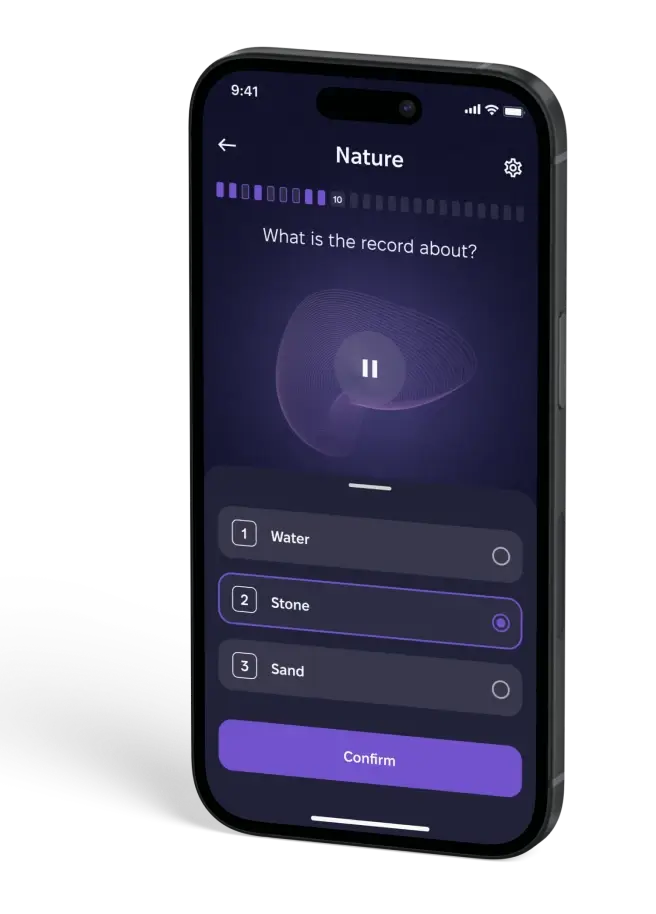
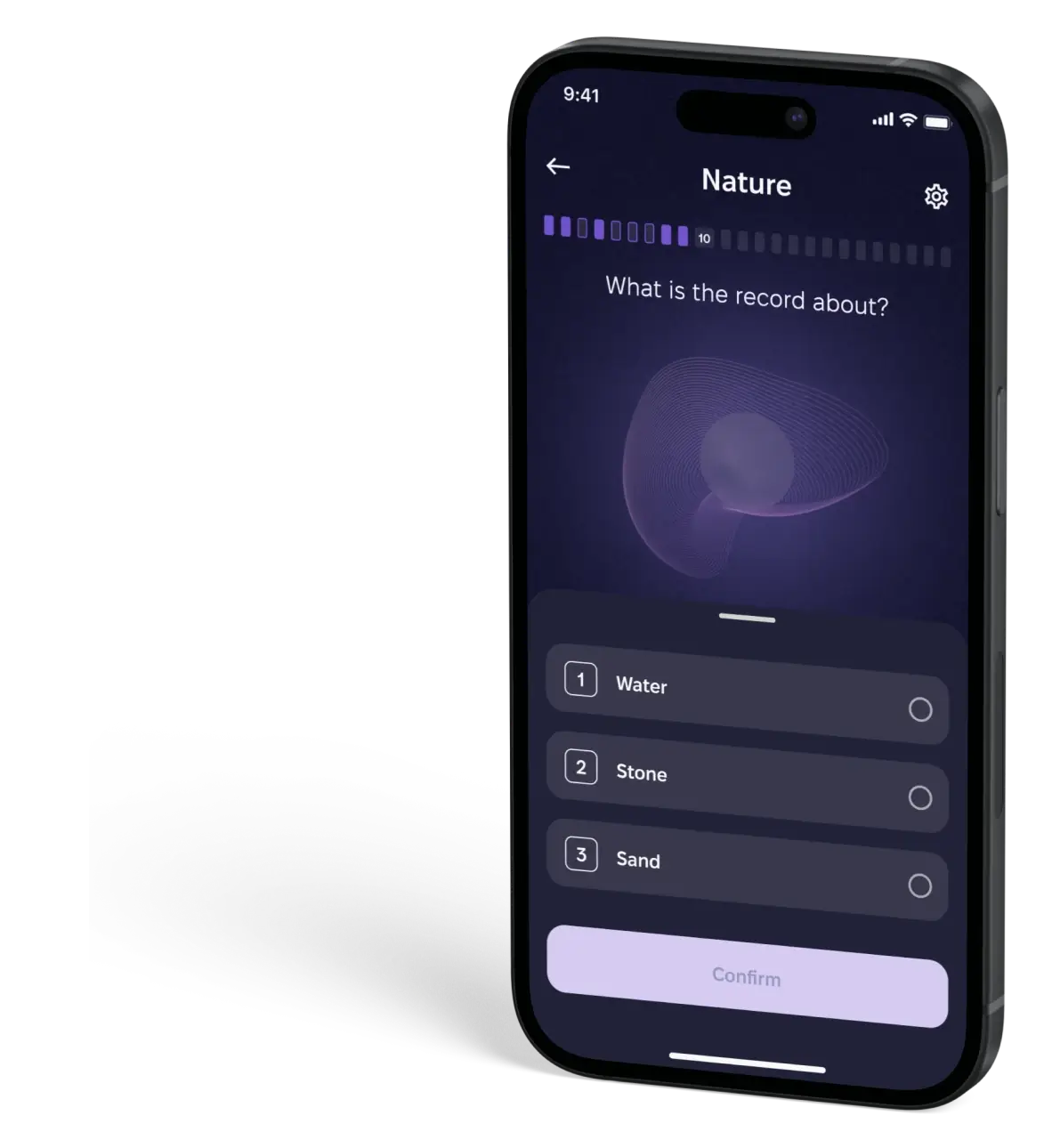
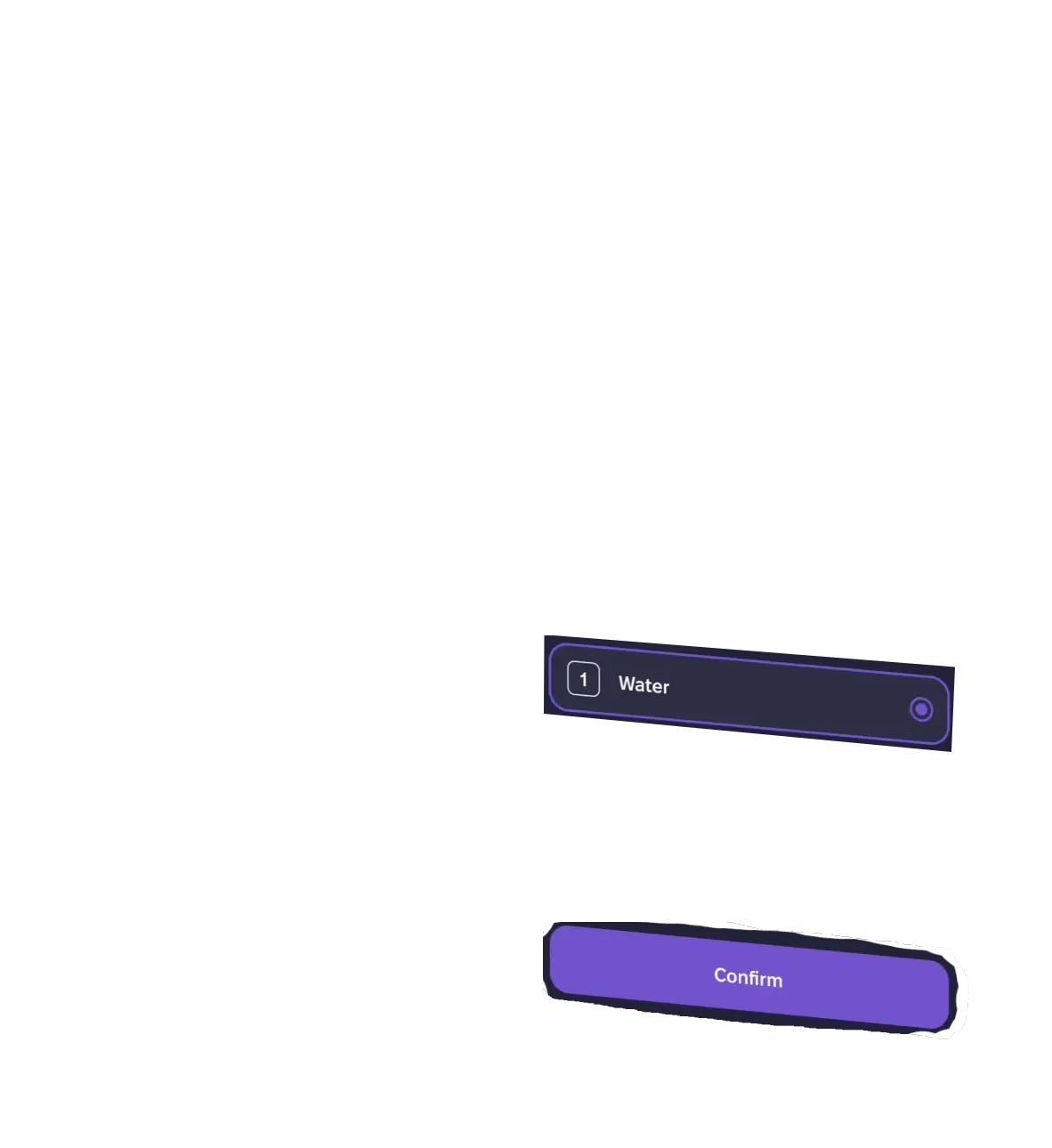
Seek out genuine internal indicators that signal your response aligns with the target.
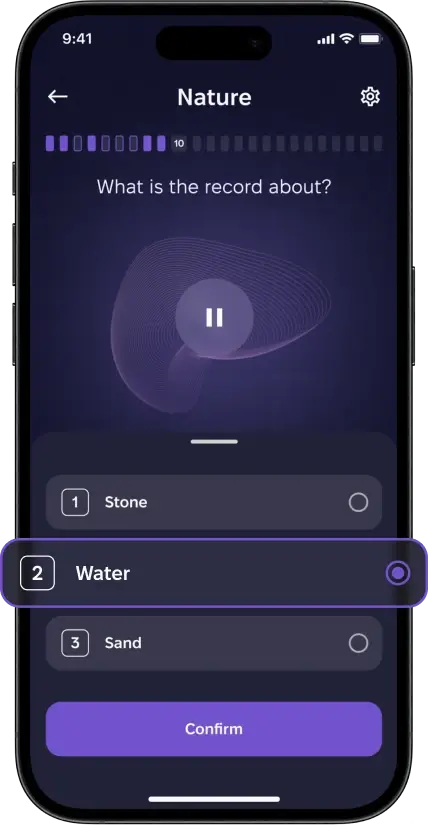
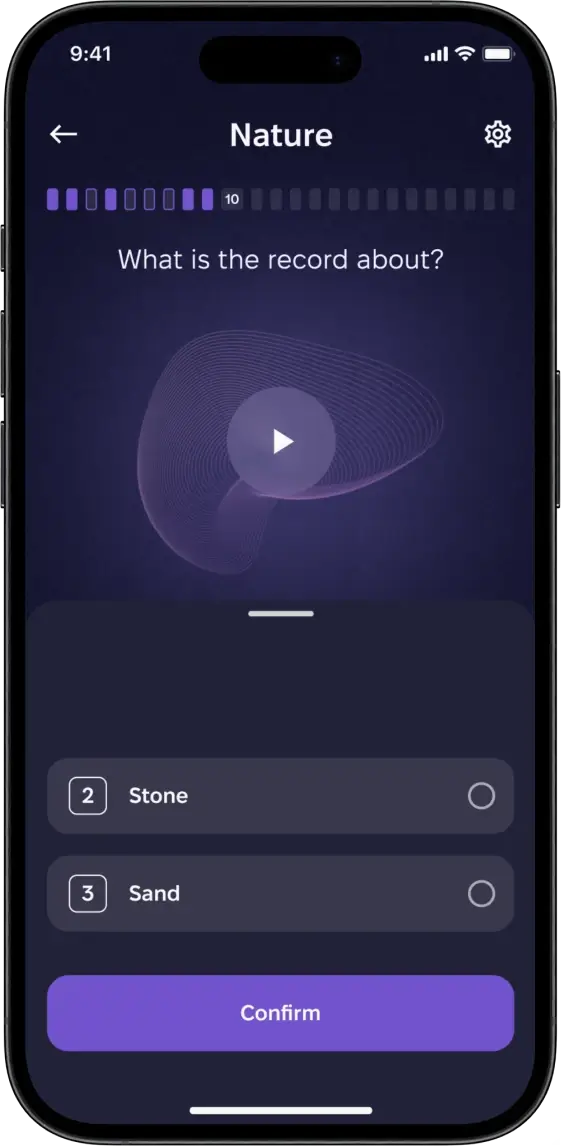
Review results after each Trial to improve your ability to sense information.

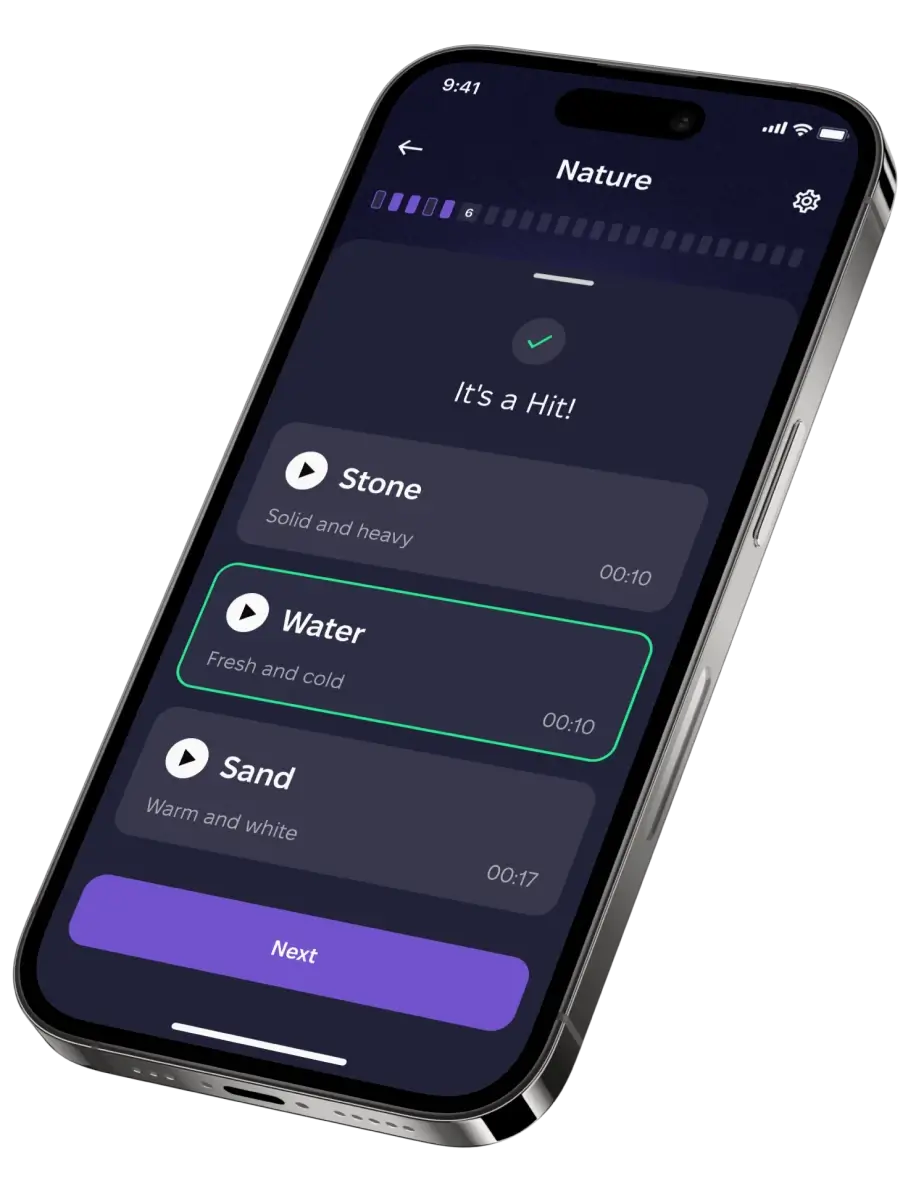
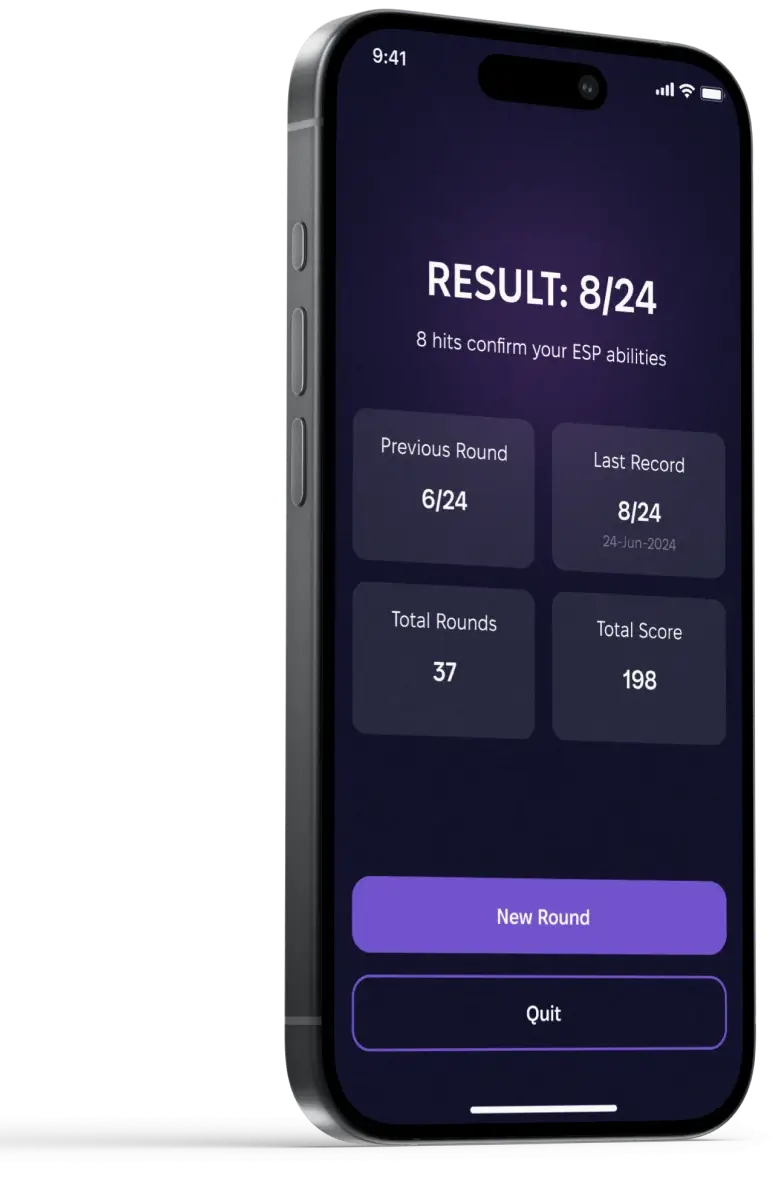
Telepathy is a natural ability of the brain that allows a human to transmit and read thoughts without physical or verbal interaction.
There are two types of telepathy: spontaneous and intentional. Most people naturally possess spontaneous or instinctive telepathy. The great example of it is a bond between a mother and a child, family members or between good friends.
This skill is trainable. And with enough practice, people can develop an intentional telepathy, which allows you to receive and transmit information.
Verevio is the best telepathy training app available on the market. We offer:
Yes, the phenomenon has been studied since the 1930s, with René Warcollier being the first to examine telepathy. He tested mind-to-mind communication through the mental transmission of images.
Around the same time, Upton Sinclair and his wife, Mary Craig Sinclair, ran their own telepathy experiments. In the book Mental Radio, he recorded about 76% of cases in which telepathy worked fully or partially. Later, between 1974 and 1981, experiments were conducted by Charles Honorton, a parapsychologist and a major contributor to the ganzfeld* database, and reviewed by skeptic Ray Hyman. Honorton collected about 28 telepathy studies (PMCID: PMC7883320) that showed 38% hit rate versus 25% expected by chance. Such deviation is statistically unlikely to be random and was replicated by other researchers such as Daryl Bem, a Swedish psychologist and parapsychologist Adrian Parker and others.
In the early 2000s, Rupert Sheldrake ran telephone telepathy experiments (PMID: 2026048628), where participants tried to guess who was about to call them. Hit rates were 40–50%. Recent studies continue to investigate telepathy, employing diverse methodologies and producing a range of findings. For example, a 2024 Swedish study (PMID: 38331693) involving 91 stimulus trials across three experiments with pairs of identical twins found that a blind judge correctly identified the stimulation epoch in 18 of the 91 trials — nearly double what chance would predict.
As of 01-Oct-25, research on twin and emotionally bonded partner telepathy is ongoing at the Institute of Noetic Science. Studies on telepathy-related phenomena are also being conducted by independent researchers and academic institutions. For example, Dr. Marina Weiler, Assistant Professor of Psychiatry and Neurobehavioral Sciences at the University of Virginia, investigates telepathy, while Dr. Paul Stevens at the Koestler Parapsychology Unit, University of Edinburgh, explores its possible physical basis.
*The Ganzfeld method, first introduced by Wolfgang Metzger, puts a person into a calm, relaxed state using techniques like covering the eyes with translucent halves of a ping-pong ball and playing white noise in the ears, which is supposed to resolve the problem of everyday sensory distractions that might block subtle telepathic signals. However, the method has been widely criticized.
Yes, Verevio is free to use. Creating an account and accessing most of the training tools is free. For those who would like to support us, there is also a premium subscription that unlocks more features, such as more daily trials, unlimited rounds, and, soon, customization and advanced statistics.
Yes. To download Verevio on Android follow these steps:
Step #1: Open the App Page in the Store Using Your DeviceYes. You can download it directly on your iPhone or iPad from the App Store.
Step #1: Open the App Page in the Store with Your DeviceImportant: The app requires iOS 13.0 or later. Make sure your device is compatible.
Step #3: Sign up or Log in.You can usually learn Telepathy through various exercises, for example, with numbers from 1 to 9. One person picks a number and “sends” it. Another one perceives and says which number was sent. See more exercises below.
If you don’t have a partner, the Verevio app can help you. Start practicing solo with a free version.
The common exercises are:
Exercise 1: Object TelepathyPracticing telepathy usually takes a lot of preparation — organization work, the proper state of mind, a partner, and a time that works for both. Verevio Telepathy trainer lets you train on your own.
There is no public evidence confirming that. The CIA and other intelligence agencies have shown interest in psychic phenomena. Declassified documents, such as Information Theory Analysis of Telepathic Communication Experiments and Telepathic Behavior Modification, reveal that they studied and analyzed research on telepathy and psychic communication made by Soviet scientists.
The CIA also funded projects like Stargate, Grill Flame, MK-Ultra, and its subprojects MKNAOMI, ARTICHOKE, and BLUEBIRD, which explored various psychic and mind-influence phenomena. However, it remains unclear whether any of these programs specifically focused on telepathy training.
Some researchers consider telepathic animal communication possible. In the book Dogs That Know When Their Owners Are Coming Home (1999), biologist Rupert Sheldrake explores the seemingly unexplained abilities of animals, including their apparent telepathic connections with humans. He presents numerous case studies and experiments suggesting that animals can anticipate their owners’ return and respond to their intentions. However, all research attracts skeptics — sometimes fairly, sometimes not. Rupert Sheldrake’s case studies were no exception.
Important: You don’t need to speak your Thoughts aloud — just think them clearly, directing them toward the recorder.
Step 3: Start the telepathy exerciseNote: It’s usually easier to sense the Thoughts of people close to you, but it’s even easier to start with your own. Once you’ve got the hang of that, you can try it with family and friends.
Everyone has telepathic abilities; we just don’t use them. They can show up spontaneously in daily life, but they can also be trained and developed.
We can recommend "Mind Reach" by Russell Targ and Harold Puthoff, "Dream Telepathy" by Montague Ullman and Stanley Krippner, and "Entangled Minds" by Dean Radin. These data-driven books focus specifically on telepathy and cover existing experiments in the field.
Classic works include "Mental Radio" by Upton Sinclair and "Mind to Mind" by René Warcollier, and "Experiments in Mental Suggestion (Studies in Consciousness)" by L.L. Vasiliev.
No. While it is mainly aimed at adults, children can participate as well. In fact, children are usually better in any ESP.
Hypothetically, yes, since no serious experiments have tested this. But in remote viewing practice, we can use an approach in which we receive feedback from ourselves in the future. In other words, when you attune with a remote viewing target number, you are trying to perceive your future self seeing the target. And every time you receive your feedback you should “telepathize” it to yourself in the past.
Some scientists suggest that this could be an alpha wave. There was an experiment with identical twins (Duane & Behrendt, 1965) which showed that the alpha waves of one twin imitated the alpha waves of the other, although only a few pairs demonstrated this effect.
There were further experiments in the 2010s–2020s, where alpha synchronization was also detected between participants.
But more advanced, a 2025 study using MEG (magnetoencephalography) that was reported by Stan van Pelt and colleagues hinted at gamma synchronization during telepathy attempts.
Furthermore, some experiments suggest that the brain can generate ultra-high frequency (UHF) oscillations. These waves do not fit into the known ranges of brain waves (delta, theta, alpha, beta) and cannot be measured by ordinary sensors. It is possible that even higher frequencies exist and may also play a role in telepathy. Overall, people’s brains are wired differently, so there may be different types of telepathy.
Yes, dream/twin/telephone telepathy experiments show it exists. Some people have a natural knack for telepathy. Others can develop this skill with practice — which is why we created this app.
As of October 2025, there is no scientific consensus that children or individuals with autism have enhanced telepathic abilities. Autistic children do communicate, often in ways that differ from neurotypical children, and their methods of communication vary widely across the autism spectrum.
The most well-known exploration of telepathic abilities in these children is The Telepathy Tapes podcast by Ky Dickens, in which Dr. Diane Hennacy Powell claims that nonverbal autistic children with savant skills could potentially have telepathic abilities. Similar ideas were supported by autism expert Bernard Rimland, who reported ESP in a small percentage of his patients and considered it a manifestation of savant skills. At the same time, while some skeptics described the podcast’s conclusions as “wishful thinking”, this perspective is still open to discussion.
In general — children, not just those with autism — are usually more sensitive to emotions and social cues because their brains are highly receptive to nonverbal communication, and with training, this ability can improve.